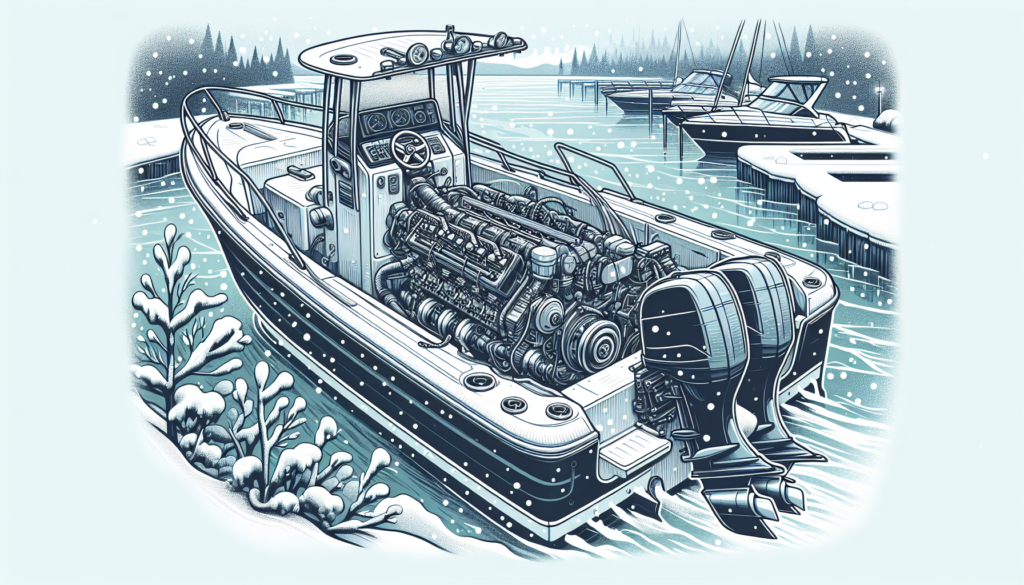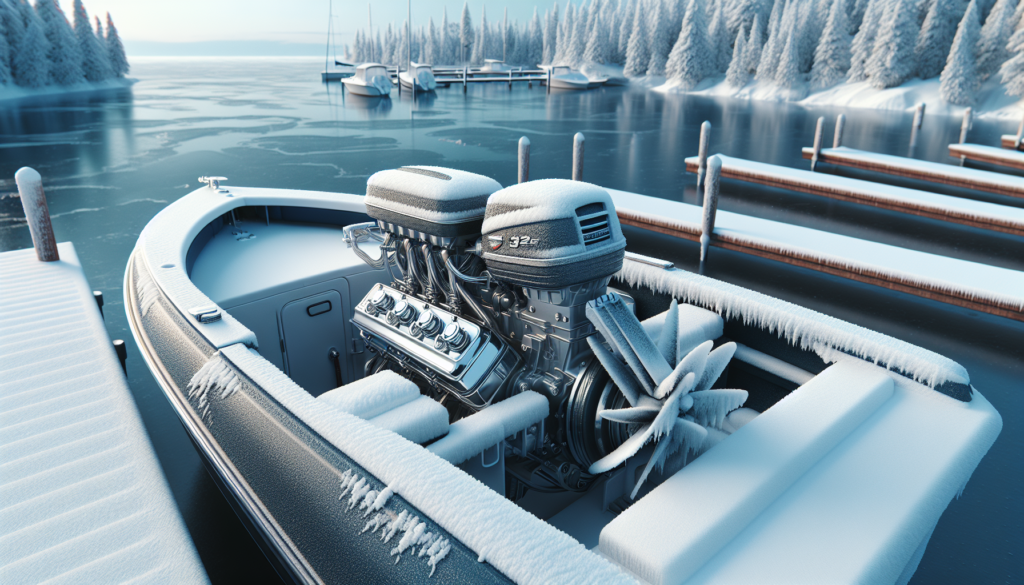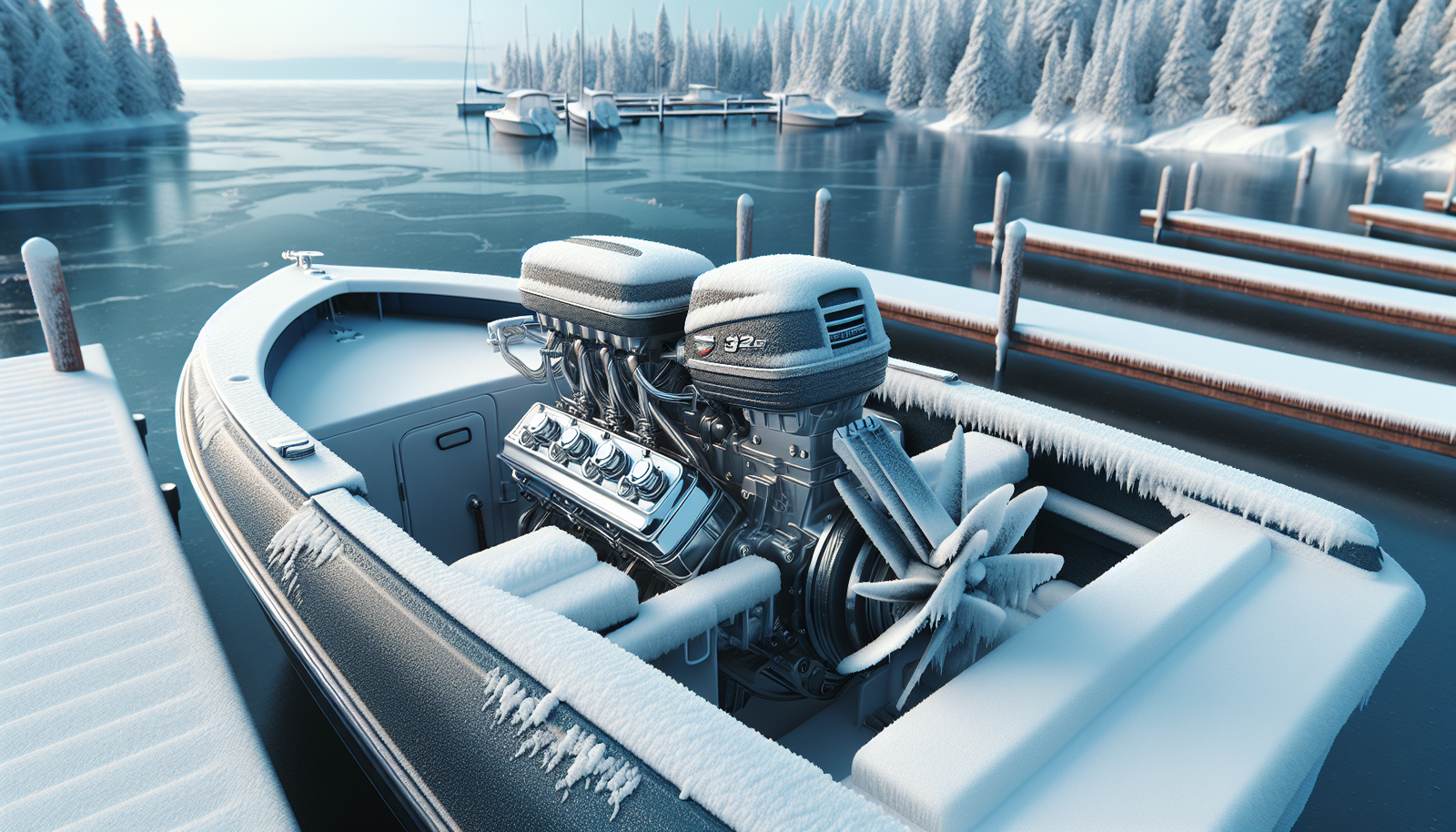As the season starts to shift and winter sets in, it’s essential for you to know how to take proper care of your boat’s engine. The article, “The Best boat engine winterization Practices For Cold Weather Boating” offers essential advice and top-notch methodologies, helping you safeguard your boat engine from the potentially damaging impact of harsh cold weather conditions. Packed with tips on engine maintenance, strategies for ideal storage, and best practices for winter-proofing your precious vessel, this article ensures you’re well prepared for what the frosty season brings your way.
Understanding Boat Engine Winterization
The notion of boat engine winterization may seem daunting if you’re not familiar with boating practices. In essence, it’s the process of preparing your boat’s engine and other essential systems for winter lay-up.
Definition of Boat Engine Winterization
Boat engine winterization is the process of preparing and protecting your boat’s engine from damage during the cold winter months when the boat is not in use. This process involves adding products to prevent freezing, corrosion, and other issues that may arise due to the harsh weather conditions.
Why Boat Engine Winterization is Necessary
If you reside in a place where winter gets harsh, boat engine winterization becomes not just advisable but necessary. The frigid temperatures, chilling winds, and harsh weather conditions can cause significant damage to your boat’s engine. It can result in cracked engine blocks, corrosion, failure of mechanical parts due to freezing, and several other costly issues. So to say, winterization is an ounce of prevention that can save you from a boatload of troubles later.
Steps Before Winterization
Before you can winterize your boat’s engine, you need to ensure it’s in prime condition.
Scheduling Regular Inspections
Regular inspections of your boat’s engine ensures any existing issues are addressed before the winterization process begins. It’s easier to fix issues beforehand rather than dealing with compounded problems after winter.
Thorough Cleaning
A thorough cleaning of your boat, especially the engine, is necessary before starting the winterization process. Dust and grime in the engine can escalate problems during winter, thus cleaning provides a fresh starting point.
Preparation of Spare Parts
Having spare parts on hand before you begin winterization can be a time saver. The process might reveal issues requiring replacement parts, and having them ready will ensure a smoother and quicker winterization process.

Choosing Suitable Winterization Products
Selecting the right winterization products is crucial for the longevity and performance of your boat’s engine.
Importance of High-Quality Products
Investing in high-quality winterization products helps ensure your boat’s engine and other systems are adequately protected. These products are specifically designed to combat the harsh winter weather and extend the life of your motor.
Recommended Brands and Products
There are several excellent brands that provide superior winterization products, such as Star Brite, CRC Marine, and Yamaha. These brands offer a range of products, including fuel stabilizers, fogging oils, anticorrosion sprays, and marine antifreeze, to name a few.
Fuel System Care
Preparing your fuel system is an essential part of the winterization process.
Fuel Tank Preparation
Make sure to fill up your fuel tank to help prevent moisture from accumulating and rusting your fuel tank.
Fuel Stabilization
The addition of a fuel stabilizer will help prevent degradation of the fuel during winter. This helps maintain the integrity of the fuel system and ensures a smooth start-up once boating season resumes.

Engine Oil and Oil Filter Change
You must also address the engine’s lubrication system before winterizing.
When and How to Change the Engine Oil
Changing engine oil should be done after the engine has warmed up. This step ensures better drainage of old oil. After that, you need to shut off the fuel supply and let the engine run until it stops. This process makes sure the system is clean. Lastly, you need to replace the oil filter.
Selecting the Right Oil Filter
Choosing the right filter depends on your boat engine’s specifications. Check your owner’s manual for guidelines, and use a high-quality filter to ensure peak performance.
Fogging the Engine
The fogging process is crucial to keep your boat’s engine safe during winter.
Explaining the Fogging Process
The process of fogging involves filling the cylinders with oil to protect them from rust and corrosion caused by moisture. It also helps protect other internal parts of the engine from dry start-ups when you revive the engine.
Important Safety Procedures
Safety must never be ignored. Always ensure you’re in a ventilated area while fogging the engine. Wear safety glasses and gloves to avoid contact with the fogging oil.

Cooling System Care
Cooling systems require special attention before winter storage.
Draining the Cooling System
All water should be drained from the cooling system to prevent freezing and subsequent damage. Failure to do this might crack the engine block, leading to expensive repairs.
Antifreeze Application
Next, apply a marine-safe antifreeze to the cooling system. This procedure ensures that there’s no water left that can freeze and cause damage.
Battery Maintenance
Batteries also require some care during the winter season.
Disconnecting and Storing the Battery
Remove the battery from the boat and store it in a dry, cool place. This practice helps prolong the battery’s life and prevents any unwanted discharge.
Charging and Care during Winter
Ensure the battery is fully charged before storing, and charge it periodically during winter. Regular care will extend its life and ensure it’s ready when you need it.

Inspecting and Protecting the Boat’s Exterior
Caring for your boat’s exterior during winter is necessary for its overall integrity and performance.
Cleaning and Waxing
Thoroughly clean and wax your boat’s exterior to protect it from the harsh weather. This process also makes the vessel look good when it’s time to start boating again.
Covering for Protection Against Elements
Covering your boat will safeguard it from precipitation and UV rays, which can cause significant damage.
After Winter Care
Once winter is over, your boat will require some attention before it’s ready for use.
Starting the Engine After Winter
When you’re ready to launch the boat, check all the systems thoroughly and start the engine. Allow it to run and warm up while checking for leaks and other potential issues.
Checking For Residual Damage
Examine your entire boat for any signs of damage that might have occurred during winter. If any issues are discovered, address them immediately to ensure your safety and the longevity of your boat.
In conclusion, boat engine winterization is a critical process for maintaining the health of your boat during the harsh winter months. By following the proper procedures, using the right products, and giving your boat some TLC, you will have a vessel that’s ready to hit the waters come spring.


[…] requires careful preparation, and your boat’s engine is no exception. “The Ultimate Boat Engine Winterization Guide” provides all the tips and information you need to protect your vessel’s […]